Creative concepts by students and alumni from De Montfort University Leicester (DMU) are featured in an exhibition hosted by the city’s LCB Depot.
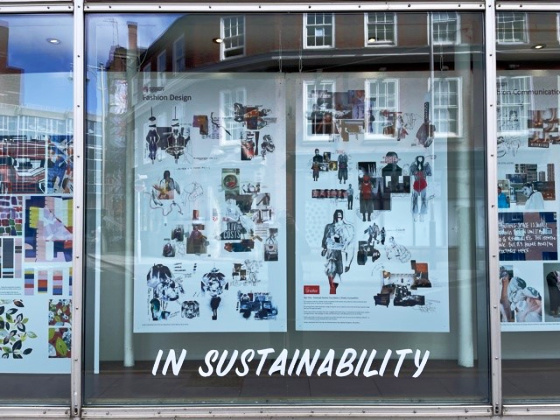
Part of DMU's display at the LCB Depot's on-street gallery
Traditionally held as an annual physical show to coincide with Fashion Revolution Week, this year’s events are taking place online and through an on-street gallery façade, providing a valuable platform for local talent during Covid-19.
The exhibition - Fashion - runs until Sunday 25 April with daily content released on Instagram and online talks and workshops, showcasing the very best of local designers and DMU students and graduates from courses such as Footwear Design and Fashion Buying.
Featured is work by Fashion Communication and Styling students Zaheera Ahmedmia and Nadia Girach, which forms part of their submission to a competition addressing homelessness and social housing, set by the Graduate Fashion Foundation (GFF) and the charity Shelter.
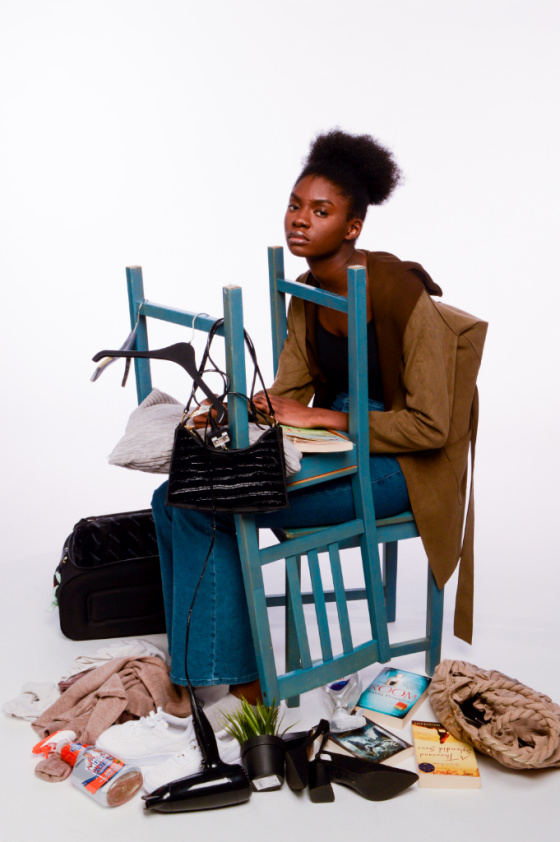
Overcrowding depicted in a fashion shoot by Zaheera Ahmedmia
For Zaheera, whose parents originate from Africa and India, the brief felt close to home. The 19-year-old from Leicester said: “When I was younger, my family and I experienced living in social housing first-hand, so I was keen to find a creative way to shed light on some of the big issues.
“My work highlights two issues in particular - overcrowding and gentrification. For example, the fire at Grenfell Tower is a direct result of it being customised to serve the rich instead of its residents.”
One particularly striking photo of Zaheera’s depicts a model entwined with chairs and surrounded by household objects, capturing the feeling of overcrowding and inescapability that her family of five once experienced while living in social housing.
She said: “I was shocked to be chosen for the exhibition but it’s so exciting. I wasn’t expecting anything to come of this year with Covid and lockdown, so having my work out there feels great.”
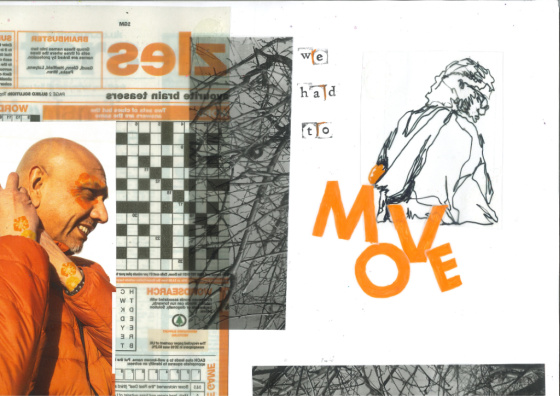
Nadia Girach's abstract work reflects her family's immigration journey
Nadia drew on her parents’ experiences as immigrants, who although didn’t face homelessness, were forced to leave their home country.
“The colour orange plays a big role in my work. It came about after some abstract thinking around the life jackets immigrants wear on boats and how much my dad misses the fruit trees he used to grow in Malawi. Oranges are an imported fruit and like immigrants they have to go through many checks before being approved,” said the 23-year-old from Leicester.
“My work is based on the fragmented memories of my family members. I hope that by sharing parts of their journey and using them as my models, I can help humanise homeless people and immigrants so that society no longer views them as an abstract concept.
“When you’re in a pandemic you feel quite separate to everyone, so being part of this exhibition is amazing. It’s nice to know my work can have an impact and will mean something to people.”
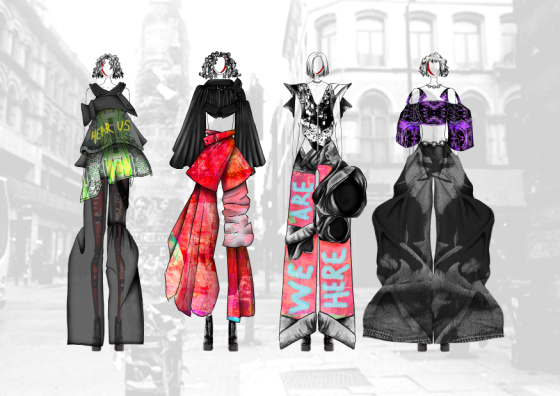
Stricking fashion designs by Meg Gibson invoke protests for more social housing
A bold collection by Fashion Design student Meg Gibson also features in the exhibition. She too worked to the brief set by GFF and Shelter, highlighting the need for more social housing.
The 20-year-old from Cheshire said: “I did a lot of research around temporary accommodation and various protests throughout the years where people have called for abandoned buildings to be put to good use so that families don’t keep ending up with nowhere to go.
“For me, fashion is about expressing yourself and your emotions, so I tried to show outrage through my designs, which incorporate powerful words and are as striking as possible.
“Being picked for the exhibition really helped my confidence and it’s been nice to know I’m doing things right, even during a pandemic.”
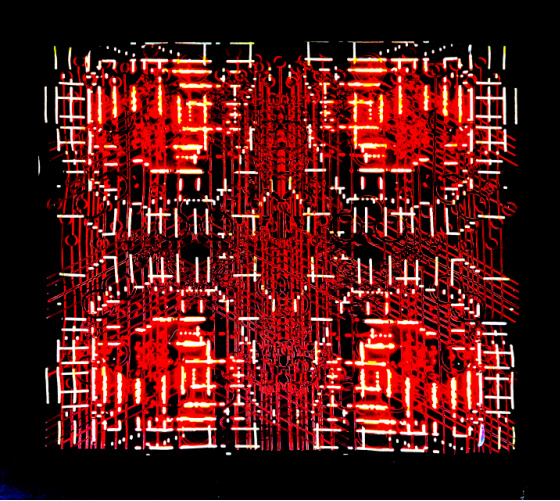
Christina Wigmore fuses physical and digital elements in her work
Fashion and Textiles MA student Christina Wigmore is showcasing combined physical and digital pieces, inspired by sustainable design methods and the women weavers who used their textile skills to weave the complex binary code wire looms for the computers that sent the 1960s Apollo rockets into space.
Christina, who has lived in Leicester since the early 1980s, said: “My main piece really comes into its own at night. Once I designed and had my textile printed, I used a heat tool to make little holes in it and threaded fibreoptic cable with LED lights through it.
“It has an accompanying film projection which shows that a textile design doesn’t need to be physically printed or woven – it can also be a design projected onto different surfaces.
“I would never have had the confidence to put myself forward for exhibitions like this – or to go for commissions – before my MA, so being among the chosen artists feels great.”
Posted on Monday 19 April 2021